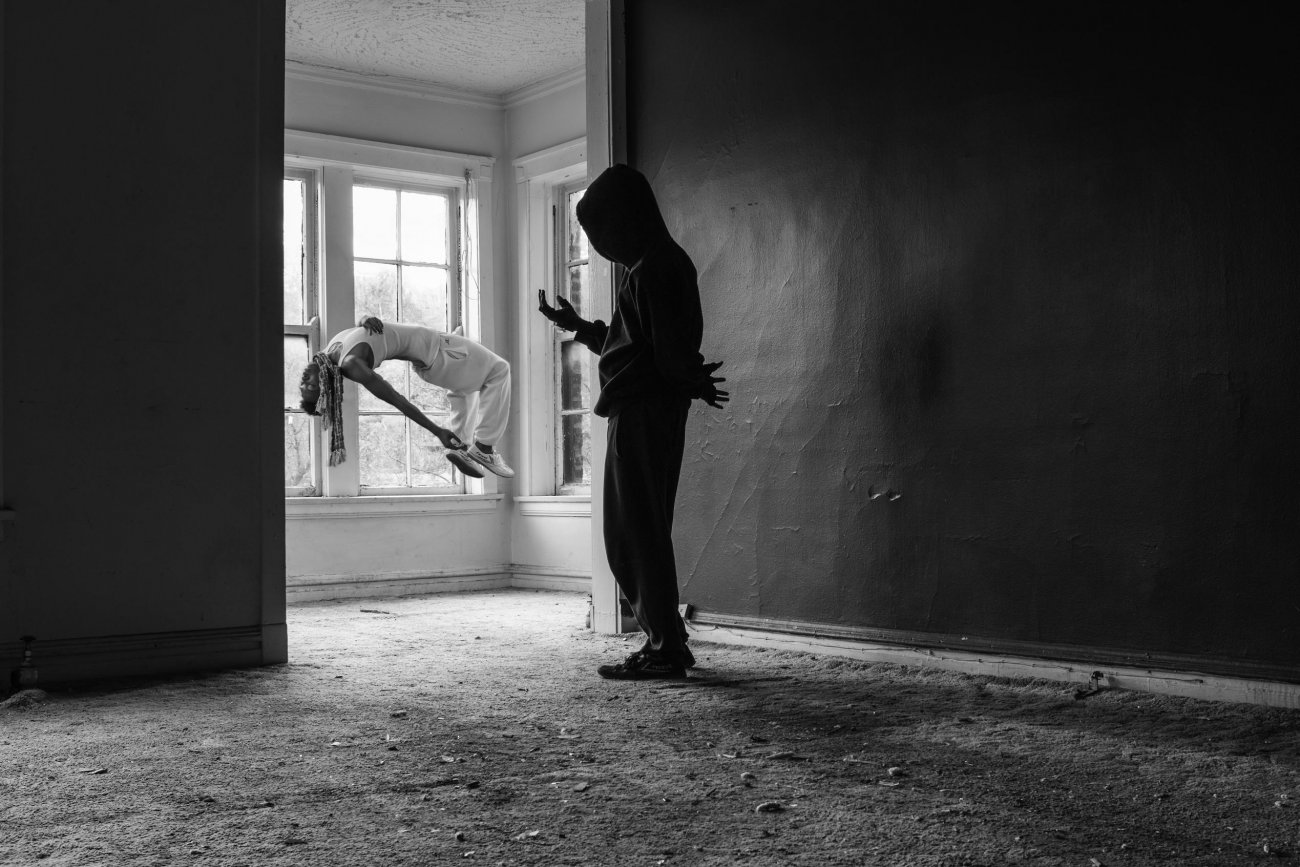
Mark Blanchard, "Effluence of the Cosmic Void," 2016, print, 24 x 36 inches

Mark Blanchard, "Effluence of the Cosmic Void," 2016, print, 24 x 36 inches
Employing a range of media, the three artists in Stranger Than Paradise explore multiple realities of space as it interacts with subjecthood and perception. As they disrupt the positioning of figure and ground, each artist bends space as both a concept and a physical reality. Familiar points of reference—people and everyday objects and settings—are distorted or deconstructed, reduced or multiplied, destabilizing what we see and confronting us with a pulsing question of how we know ourselves in the world.
Imbued with a sense of stillness and surrealism, Mark Blanchard’s works explore black identity and (mis)representation, depicting figures that are in conversation with themselves and with historical narratives. Through devices of doubling and layering, Blanchard’s work meld temporalities, creating spaces that feel conscious of themselves as images—and aware of their own potentiality.
Brightly colored and boldly patterned, Sarita Garcia’s work remixes vernacular culture like signage, market and shop stands, and foods. As she amasses personal photographs of familiar places and things, Garcia recombines fragments of these images into saturated “fantasyscapes” which act as new material and visual realities of cultural spaces and products. By folding multiple reference points into reimagined forms, Garcia explores broader questions about consumerism, identity, and the complicated ways of understanding place and its implications.
Kushala Vora’s exacting drawings require that we peer closely at each surface to apprehend the intricate details of the classroom settings depicted. Sourced from Vora’s own documentation, the scenes expose colonial influence on acts of learning, particularly as it relates to systems of naming and classification. By cutting away at the paper and layering the scenes atop imagery of landscapes beyond the classroom walls, Vora exposes tensions between inside/outside and standardization/freedom, while challenging how perception is cultivated.